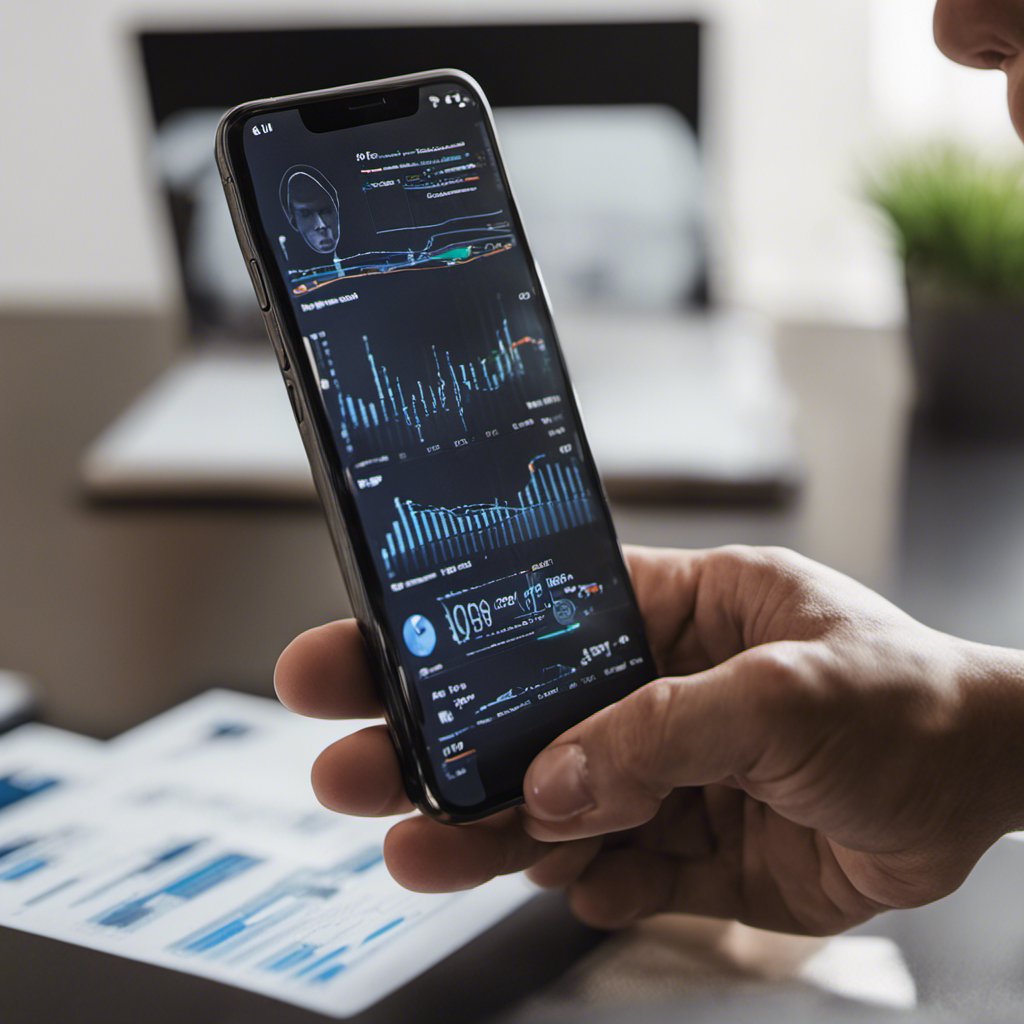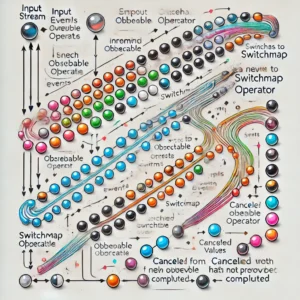The role of APIs in mobile app development is crucial in today’s fast-paced digital world. APIs, or application programming interfaces, are essentially a set of protocols, routines, and tools that enable software applications to communicate with each other. In other words, APIs allow mobile apps to access data from other applications and services, which is essential for providing users with a seamless experience.
One of the biggest benefits of APIs in mobile app development is that they enable developers to integrate third-party services into their apps. For example, a travel app can use an API to access the data on current flight ticket rates provided by a web service. This enables the app to provide users with up-to-date information on flight prices, which is crucial for travelers. Similarly, a weather app can use an API to access weather data from a weather service, allowing it to provide users with accurate and timely weather information.
Another key benefit of APIs in mobile app development is that they save developers a lot of time and effort. Since APIs are easily available, mobile app developers can use them to quickly integrate features and services into their apps without having to write code from scratch. This not only speeds up the development process but also reduces the risk of errors and bugs. Overall, APIs play a critical role in mobile app development and are essential for creating innovative and user-friendly apps.
I’ve authored a comprehensive article that delves into the Best Practices and Design Principles for constructing RESTful APIs. In that article, I provided detailed insights into the concept of APIs and offered guidance on how developers should approach their design and implementation. To set the stage for our discussion on the role of APIs in mobile application development, let’s begin with a brief introduction to APIs.
Understanding APIs
As a mobile app developer, it is essential to understand what APIs are and how they work. APIs, or application programming interfaces, are a set of protocols that allow different software components to communicate and transfer data. In other words, APIs enable mobile apps to access features and functionalities of other applications and services.
Definition of APIs
APIs act as a primary resource and enabler for extending an enterprise’s reach beyond its current limitations. They offer easy integration and rapid delivery method, allowing enterprises to bundle assets along with those of partners and deliver them where users use them – on mobile applications.
APIs can be thought of as a messenger between two software applications. They enable apps to communicate with each other and share data. APIs can be used to access databases, services, or features of another app or platform, providing better services and functionalities to the end-users.
Types of APIs
There are several types of APIs, each with its own set of features and functionalities. Here are some of the most common types of APIs:
- Open APIs: Open APIs, also known as external or public APIs, are available to developers and other users with minimal restrictions. They can be accessed over the internet and are usually free to use.
- Internal APIs: Internal APIs, also known as private APIs, are used within an organization to streamline its operations. They are not available to the public and are used for internal purposes only.
- Partner APIs: Partner APIs are used to allow partners to access specific data or services. They are usually used in business-to-business (B2B) scenarios.
- Composite APIs: Composite APIs are a combination of multiple APIs that work together to provide a single, unified interface. They are used when multiple APIs are needed to complete a task.
In summary, APIs are a crucial component of mobile app development. They enable apps to communicate with each other and share data, providing better services and functionalities to the end-users. There are several types of APIs, each with its own set of features and functionalities. It is essential to understand the different types of APIs to choose the right one for your app development needs.
The Role of APIs in Mobile App Development
As a mobile app developer, I have come to appreciate the role of APIs in enhancing the functionality, security, and user experience of mobile applications. APIs, or application programming interfaces, are a set of protocols, routines, and tools that allow software applications to interact with each other. In this section, I will discuss the key roles of APIs in mobile app development.
APIs and User Experience
APIs play a crucial role in enhancing the user experience of mobile applications. They enable developers to integrate various features and functionalities into an app, such as camera, location, and social media sharing. For example, an app can use the camera API to allow users to take photos and videos directly from within the app. This makes the user experience more seamless, as users do not have to switch between different apps to perform different tasks.
Furthermore, APIs allow developers to integrate third-party services into their apps, such as payment gateways, messaging platforms, and analytics tools. This makes it easier for users to access these services without leaving the app, which in turn enhances the user experience.
APIs and Functionality
APIs also play a crucial role in enhancing the functionality of mobile applications. They allow developers to access various features and functionalities of other applications and services, which can be integrated into their own apps. For example, an app can use the Google Maps API to provide users with location-based services, such as directions to a nearby restaurant.
Moreover, APIs enable developers to integrate various data sources into their apps, such as weather data, news feeds, and stock prices. This makes the app more useful and informative for users, as they can access a wide range of information without leaving the app.
APIs and Security
APIs also play a critical role in ensuring the security of mobile applications. They allow developers to integrate various security features into their apps, such as authentication, encryption, and access control. This helps to protect user data from unauthorized access and ensures that the app is secure and reliable.
Furthermore, APIs enable developers to integrate various security services into their apps, such as firewalls, intrusion detection systems, and antivirus software. This helps to protect the app from various security threats, such as malware, viruses, and hacking attempts.
In conclusion, APIs play a crucial role in enhancing the functionality, security, and user experience of mobile applications. As a mobile app developer, I have come to appreciate the power of APIs in making my apps more useful, informative, and secure for users.
API Integration in Mobile Apps
As a mobile app developer, I understand that integrating APIs is an essential part of the development process. APIs allow us to access pre-built functionalities and services that can save time and resources. In this section, I will discuss the two main aspects of integrating APIs in mobile apps: choosing the right APIs and implementing those APIs.
Choosing the Right APIs
Choosing the right APIs is crucial for the success of any mobile app. Here are some factors to consider when selecting APIs:
- Functionality: The API should provide the required functionality for the app.
- Reliability: The API should be reliable and have a good track record of uptime.
- Scalability: The API should be able to handle the expected traffic and scale as the app grows.
- Documentation: The API should have clear and comprehensive documentation that makes it easy to integrate and use.
- Cost: The cost of using the API should be reasonable and within the app’s budget.
By considering these factors, we can choose APIs that meet the app’s requirements and ensure a smooth integration process.
Implementing APIs
After choosing the right APIs, the next step is to implement them in the app. Here are some best practices for implementing APIs:
- Authentication: The API should be authenticated to ensure that only authorized users can access it.
- Error handling: The app should handle errors gracefully and provide meaningful error messages to the user.
- Caching: Caching can improve app performance by reducing the number of API calls and minimizing network traffic.
- Testing: The app should be thoroughly tested to ensure that the API integration works as expected.
- Monitoring: The app should be monitored to detect any issues with the API integration and ensure that the app is running smoothly.
By following these best practices, we can ensure that the API integration is successful and the app provides a seamless user experience.
In conclusion, integrating APIs is a critical aspect of mobile app development. By choosing the right APIs and implementing them correctly, we can create apps that provide the required functionality and a smooth user experience.
Case Studies of APIs in Mobile App Development
Popular Apps Using APIs
APIs have become an essential part of mobile app development. Many popular apps use APIs to provide a better user experience and enhance their functionality. Here are some examples:
- Google Maps API: Many mobile apps use Google Maps API to provide location-based services to their users. The API offers various features like geocoding, routing, and map visualization.
- Facebook API: Facebook API enables developers to integrate Facebook features into their mobile apps. With Facebook API, users can share content, authenticate with Facebook, and access Facebook data.
- Twitter API: Twitter API is used by many mobile apps to enable users to tweet, follow, and search for tweets. The API also offers features like direct messaging, user authentication, and account management.
Success Stories
APIs have helped many mobile app developers to create successful apps that offer a great user experience. Here are some success stories:
- Uber: Uber uses Google Maps API to provide real-time location tracking, route optimization, and fare estimation to its users. The API has helped Uber to create a seamless user experience and become a leading player in the ride-sharing industry.
- Airbnb: Airbnb uses Google Maps API to provide location-based search and map visualization to its users. The API has helped Airbnb to create a user-friendly interface that allows users to find and book accommodations easily.
- Instagram: Instagram uses Facebook API to enable users to share photos and videos on Facebook. The API has helped Instagram to increase its user base and become a popular social media platform.
In conclusion, APIs have become an integral part of mobile app development. They offer a standardized way for mobile apps to communicate with backend services and enable data exchange. Many popular apps and successful companies have used APIs to create a great user experience and enhance their functionality.
Challenges and Considerations
As with any technology, APIs in mobile app development come with their own set of challenges and considerations. In this section, I will outline some of the most common challenges and considerations that developers need to keep in mind when working with APIs.
Security and authentication
One of the biggest challenges when working with APIs is ensuring that they are secure and properly authenticated. Developers need to take steps to ensure that only authorized users can access the API, and that data is transmitted securely. This can involve using encryption, implementing access controls, and using secure authentication mechanisms such as OAuth.
Versioning and maintenance
Another challenge with APIs is versioning and maintenance. As APIs evolve, it is important to ensure that older versions of the API are still supported, while also providing new features and functionality in newer versions. This can involve maintaining multiple versions of the API, and ensuring that changes are properly communicated to developers who are using the API.
Rate limits and usage policies
APIs can also be subject to rate limits and usage policies, which can limit the number of requests that can be made to the API in a given period of time. Developers need to be aware of these limits and policies, and ensure that their apps are designed to work within them. This can involve implementing caching mechanisms, optimizing API calls, and designing apps to work with limited data sets.
Tips – how to mitigate these challenges
To mitigate these challenges, developers can take a number of steps. For example:
- Use well-established APIs that have a proven track record of security and reliability.
- Implement robust authentication and access control mechanisms to ensure that only authorized users can access the API.
- Use versioning and maintenance best practices, such as maintaining multiple versions of the API and properly communicating changes to developers.
- Optimize API calls to work within rate limits and usage policies, and implement caching mechanisms to reduce the number of calls to the API.
By taking these steps, developers can ensure that their apps are secure, reliable, and scalable, and that they can take full advantage of the power of APIs in mobile app development.
Future of APIs in Mobile App Development
As mobile app development continues to grow and evolve, so too do the APIs that power them. Here are some emerging trends and predictions for the future of APIs in mobile app development.
Emerging Trends
One emerging trend in API development is the use of GraphQL. This query language allows developers to request only the data they need, reducing the amount of data transferred between servers and mobile devices. This can lead to faster load times and improved app performance.
Another trend is the use of microservices architecture, which involves breaking up an app into smaller, more manageable components. APIs can be used to connect these components, allowing for greater flexibility and scalability.
Finally, there is a growing focus on API security. As more sensitive data is exchanged through APIs, it is important to ensure that they are secure and protected from malicious attacks.
Predictions
Looking ahead, it is likely that APIs will continue to play a critical role in mobile app development. Here are some predictions for what the future may hold:
- Increased use of machine learning and artificial intelligence in APIs, allowing for more personalized and intelligent app experiences.
- Greater standardization and interoperability between APIs, making it easier for developers to integrate multiple APIs into their apps.
- More emphasis on API documentation and developer experience, as developers look for easy-to-use and well-documented APIs.
- Continued growth in the API economy, with more companies monetizing their APIs and offering them as a service.
Overall, the future of APIs in mobile app development looks bright. As new technologies and trends emerge, APIs will continue to provide the backbone for innovative and powerful mobile apps.
Conclusion
In conclusion, APIs play a crucial role in mobile app development. They enable communication between the mobile app and backend services, allowing for the seamless integration of data and functionality.
One of the main benefits of APIs is their ability to provide access to data from other applications and services. This enables mobile apps to offer a wider range of features and functionality to users, without having to develop everything from scratch.
Additionally, APIs allow for the integration of third-party services, which can help to enhance the overall user experience. For example, a travel app may use an API to access flight data from a web service, providing users with up-to-date information on flight schedules and prices.
It’s important to note that while APIs are essential for mobile app development, they must be used responsibly. Developers should ensure that they are using secure, reliable APIs that are compatible with their app’s platform and architecture.
Overall, APIs are a powerful tool for mobile app developers, enabling them to create innovative, feature-rich apps that offer a seamless user experience.
Additional Resources
If you’re interested in learning more about the role of APIs in mobile app development, there are a variety of resources available online. Here are a few that I recommend:
Google Developers
Google Developers offers a wealth of information on APIs for mobile app development. Their documentation covers everything from getting started with APIs to best practices for implementation. They also offer a variety of tools and resources to help developers build better apps with APIs.
GitHub
GitHub is a popular platform for developers to share code, collaborate on projects, and discover new tools and resources. They offer a variety of open source APIs for mobile app development, as well as libraries and frameworks to help streamline the development process.
Stack Overflow
Stack Overflow is a community-driven platform for developers to ask and answer technical questions. They offer a wealth of information on APIs for mobile app development, including best practices, troubleshooting tips, and more.
By taking advantage of these resources, you can gain a deeper understanding of the role of APIs in mobile app development and stay up-to-date on the latest trends and best practices.






